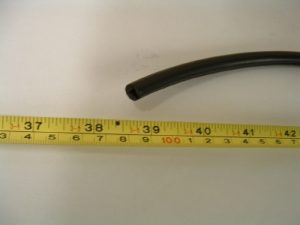When a rider applies pressure to the brake lever or pedal of a motorcycle with disc brakes, a Triumph Motorcycle master cylinder connected to the lever or pedal pressurises the system. It sends hydraulic pressure to the wheels’ brake calipers. The brake pads’ metal backing is pressed outward by the calipers’ one or more pistons. The motorcycle’s kinetic energy is transformed into thermal energy as brake pads create friction with the rotating rotor. The brake rotors, pads, and calipers all absorb some of this heat before dispersing it into the atmosphere.
In disc brake systems, the brake discs also known as brake rotors are contacted with friction surfaces known as brake pads. Different friction materials are glued or previously welded to a steel base plate to create these. Asbestos used to be widely used for brake linings. Still, after the health risks of this substance were discovered, it was gradually phased out and replaced by more modern, high-tech materials. Many high-tech materials can make brake pad linings friction material.
There are several different kinds of brakes for motorcycles
- Sintered Brake Parts
Today, sintered linings for brakes are the norm. Due to their versatility, they are standard on virtually every motorbike. In the sintering process, heat and pressure fuse metal particles in a high-friction, wear-resistant material. This makes sintered linings ideal for competitive riders, urban cyclists, and those who frequently traverse rugged terrain. Sintered brake linings offer a consistent coefficient of friction from cold to hot and give quick, effective bite. In addition to being able to withstand high temperatures without deforming, they resist fading, endure significantly longer than competing materials, and function effectively in wet, muddy conditions. They aren’t perfect, though. When applied, sintered pads make more noise than organics and are more expensive. - Semi-Sintered Brake Parts
There is a third option for those who can’t decide between the advantages of sintered and organic linings. Semi-sintered pads, such as those from EBC, combine the long-life properties of sintered linings with the reduced rotor wear and progressive feel of organics. The semi-sintered pads use 30 percent copper by weight in an organic matrix designed to fit squarely midway between sintered and organic for durability and performance and are a nice compromise for many riders. - Ceramic Composite Brake Parts
High-pressure and temperature bond high-strength ceramic fibres and non-ferrous metal filaments make Ceramic Composite brake pads. Flexible metal filament friction materials provide an excellent initial “bite.” Heat-resistant ceramic fibers and polymeric binders reduce high-temperature brake “fade.” They also brake well in every weather and are quiet. Ceramic-composite material breaks well cold and hot after miles of cycling. The non-ferrous metal filament matrix recovers heat quickly from the pad-rotor interface. Cooling the engine reduces rotor wear and warping. They don’t fit all motorcycles.
Conclusion
Check the bike over thoroughly one more time before going for a spin. Examine the Triumph Motorcycle Brake Parts and levers to make sure they feel regular. Don’t immediately haul ass or put yourself in heavy traffic on your test ride. Put on your best protective gear, too. Check the brakes; if they operate correctly, you can start the break-in procedure.

